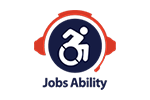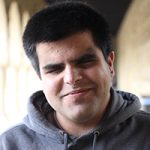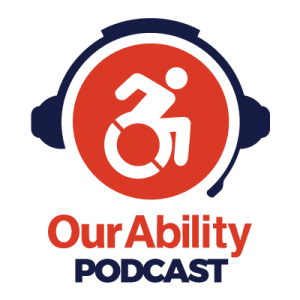
Jobs Ability May 2023 Statistics
June 20, 2023
Job Opportunity: Contract Administration Specialist | New York State Industries for the Disabled, Inc.
June 21, 2023Planting the Seeds of Activism: Kartik Sawhney Part I

By Dave Allen
[EDITOR’S NOTE: Kartik Sawhney is Our Ability’s Senior Manager, Technology and Product. Despite being blind since birth, he is a leading advocate for accessible technology, education and employment opportunities for people with disabilities, and is the team leader behind Our Ability’s AI-driven virtual job portal, Jobs Ability. A self-described “entrepreneur, innovator and activist,” Sawhney became the first blind student to pursue science education beyond the 11th grade in his home country of India. In Part I of our two-part series on Sawhney, we take a closer look at the beginnings of his activism, and the personal struggles he faced growing up in an educational system that wasn’t yet ready to open its doors for visually impaired people.]
Shortly after being born, Kartik Sawhney was diagnosed with an eye disease known as Retinopathy of Prematurity, or ROP, a disease that generates abnormal blood vessels in the retina of some premature babies. As it was explained to Sawhney, excess oxygen given to him during incubation is what led to the permanent damage of his retina.
“For all practical purposes, I was born blind,” Sawhney says.
Sawhney’s twin sister, born 11 minutes earlier, did not develop any visual impairment. Kartik was the first member of his extended family to suffer from blindness. For Kartik, it wasn’t a new normal, it was his normal. But for his parents, especially his father, a car accessories store owner in the South East Delhi district of Lajpat Nagar, it was a very worrisome time. There were many questions. How would his new son fit into their large, joint-family household? How would he attend school, make friends and be like other children?
Fortunately for the Sawhneys, Kartik’s dad soon came to meet a successful blind musician and also an administrator for a special school for the blind in Delhi. They quickly convinced the Sawhneys that Kartik could not only have a normal childhood, but that he’d have the same opportunities to earn a living and raise a family that they had.
“That really changed things for my parents who, until then, were very pessimistic,” Sawhney says. “It was a pivotal moment for them.”
Sawhney didn’t receive any special treatment around the house. He was expected to wash the dishes and do his chores just like everyone else, and like most siblings, he and his older brother and twin sister played games and had their fair share of tussles, too.
“I didn’t get a pass because I was blind,” Sawhney says. “It was very ‘normal’ that way.”
Sawhney’s early education experience wasn’t so normal, however. Up until the second grade, he had to read and write all of his assignments in braille, with a twist. Because his teachers didn’t understand braille, his mother would have to sit at the dining room table every night and transcribe all of his schoolwork to print. India’s public schools didn’t have a TVI, or teacher of students with visual impairments, unless one was arranged for by the family.
By lucky chance, Sawhney befriended a blind student in the second grade whose father was a computer engineer. The father made sure that his son had access to a screen reader, a software program that reads what’s on the computer screen and turns it into speech. That was another pivotal introduction for Kartik and his parents, who soon hired an instructor from a local school for the blind in Delhi to come and teach young Kartik how to use a screen reader.
The third and perhaps most influential meeting occurred when Sawhney attended Delhi Public School R.K. Puram in sixth grade. Known for poaching some of the top students from around the country, the day and private boarding school had just begun admitting students with visual impairments in the 1990s, and produced several academic national champions. Sawhney befriended several of the science, technology, engineering and math (STEM) students, and quickly took a liking to computer programming.
For Sawhney, writing code was something he could do as well as any of his clear-sighted friends. Given an equal playing field, it was something he could excel at as well. It was his dream to study computer science at one of India’s 20-plus Indian Institutes of Technology (IITs)—the country’s version of MIT and Caltech—and then one day develop and productize his own software programs and applications.
The trouble was, neither India’s Central Board of Secondary Education (CBSE) or the IITs had any interest in providing secondary and higher educational opportunities in STEM for its visually-impaired students. After the 10th grade in India, students are to select from one of three educational streams of study: 1) science, which included both a medical and non-medical track (physics, chemistry, mathematics and computer science); 2) humanities (sociology, psychology, etc.); or 3) commerce (accounting, finance, etc.). But in 2010, blind students weren’t even given the option to study science in the 11th and 12th grade. And if you wanted to study computer science at the university level, as Sawhney did, you had to take the non-medical science track.
Whatever the CBSE’s reasons were for excluding him and other blind students from pursuing a career in computer technology—a lack of knowledge (“How could a blind person even use a computer?”), low expectations, a preconceived attitude toward people with disabilities, etc.— Sawhney was suddenly feeling the full weight of his disability, and it didn’t seem fair.
“That was probably the first time where I thought to myself, ‘why me?’ ” Sawhney says.
It was at this point in time when Sawhney, the activist, was born. It befuddled and infuriated him. “Why shouldn’t he be given the same opportunity as his peers?” So Sawhney fired off letter after letter to the CBSE—about 40 over the course of nine months—and even had several in-person meetings/demonstrations with the chairman of the CBSE. A non-governmental organization also campaigned on his behalf. Eventually, he figures, he “wore down” the CBSE and was granted the opportunity to pursue the non-medical track, becoming the first blind Indian student to do so in grades 11 and 12.
“I think they just grew tired of me,” Sawhney says. “They figured they’d let me in just so that I could fail.”
Being the first blind student in India to study science was like trying to fly an airplane for the first time with no written procedures and the controls upside down. There were no mentors or roadmaps to help Sawhney succeed. The assistive technology he needed to interpret curves, graphs, organic structures, diagrams, images, etc., also wasn’t available to him. These Western software programs cost a small fortune, so Sawhney leaned on his own programming skills to develop a software program that would help him and future blind students better study and learn the advanced curriculum in the non-medical track. He created an Audio Graphic Describer that converted graphs into sound, so that someone who is blind could understand it through variations in sound frequency. If the graphs sloped upwards, you’d hear an increase in frequency; and if they sloped downwards, you’d hear a decrease in frequency.
“It wasn’t so much that I needed to prove them wrong,” Sawhney says. “I just wanted to get into the top tech schools in India. But yeah, somewhere deep in my heart I wanted to prove to those people that had low expectations for me that I could do it, and do it better.”
Of course, pursuing an education at one of the top tech schools in India provided yet another challenge. In order to take and pass the IITs’ entrance exam, Sawhney would need to take the exam on a computer with a screen reader and other additional assistive technologies capable of interpreting and converting scientific notations, diagrams and graphs into text. The IIT, an autonomous entity, would not provide Sawhney with any of these accommodations, not even a computer. They would allow for a human reader and writer who would read the questions aloud to Sawhney and also do his scratchwork, but only someone who had no experience with STEM. In essence, that meant that the reader/writer might not even be able to read out the questions with complex scientific notation, and Sawhney had to somehow work with them.
Sawhney had known about the entrance exam policy for blind students for some time, and began talking to the IITs about it as early as the 10th grade. For almost two-and-a-half years, he advocated for the right to be accommodated for the entrance exams. Finally, enough was enough, and he entertained the idea of studying abroad.
“I eventually came to the realization that even if I make it, they’re not going to provide me with the technology I need to study well,” Kartik says. “And I’d be wasting time continuing to explain how blind people can indeed become a computer software developer or engineer. I didn’t want to do that anymore. I wanted to grow.”
That led to a phone call to an aunt in California, who just happened to have attended Stanford University. Shortly thereafter, one closed opportunity suddenly became the opportunity of a lifetime, and a chance to undo all of the injustices thrust on him, while also advocating for equitable education and opportunities for all.
[Link to Part II here when it’s published]
Part II: Becoming an Entrepren



